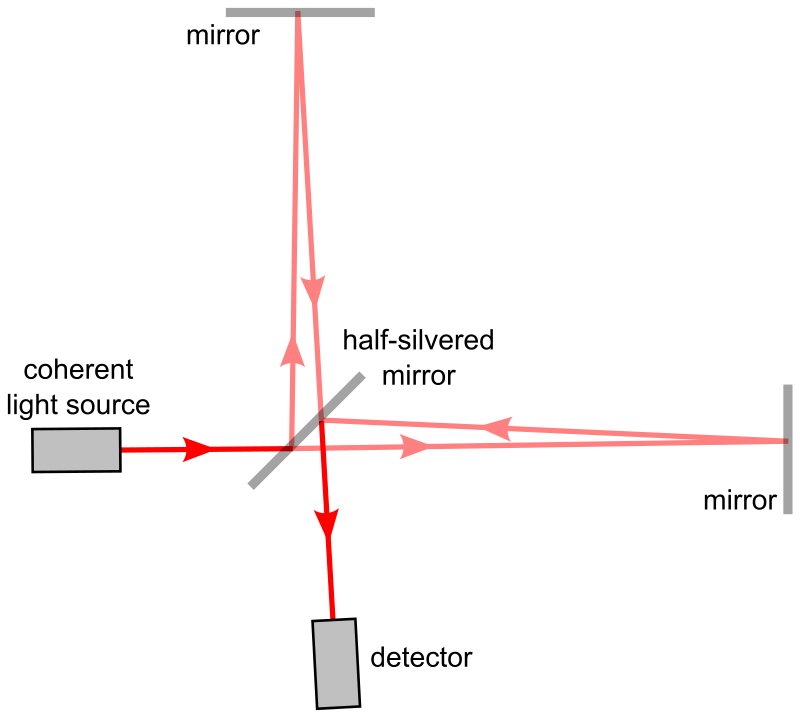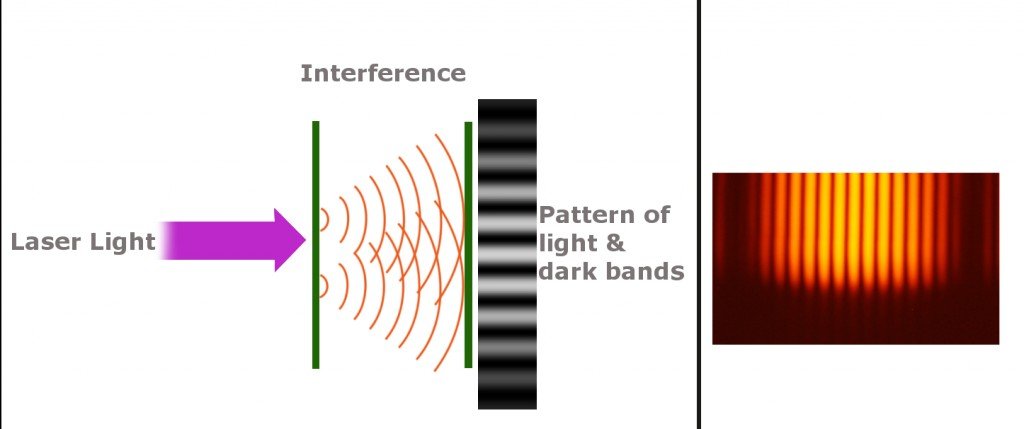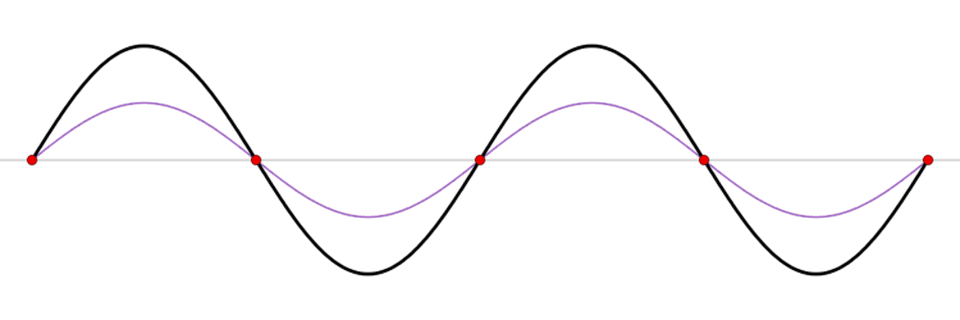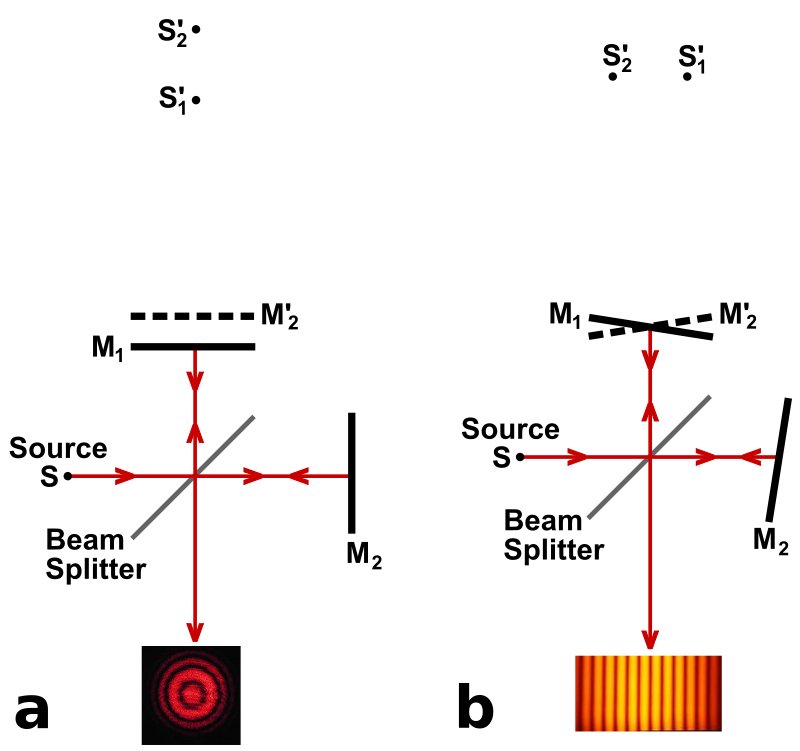Table of Contents (click to expand)
The Michelson interferometer experiment is an experiment that uses an interferometer to split a beam of light into two beams, reflect each beam off of a mirror, and then recombine the beams. The resulting interference pattern is then studied to understand the results of the experiment.
An interferometer is an experimental tool used for investigative purposes in science and engineering. They are often used to make very small measurements at scales that are hard to perceive with the human eye or most measuring instruments. There are certain interferometers that can make measurements as precise as 1/10,000th of a proton. The person who invented the interference machine was Albert Michelson, and remarkably, he did so in the 19th century. It was, in fact, the Michelson-Morley experiment that disproved the presence of a luminiferous aether, which physicists had believed existed up to that point as the medium through which light traveled. The fact that the aether was disproved paved the way for the theory of special relativity and the birth of modern physics. Now, let’s look at the configuration of the Michelson interferometer.

What Is An Interference Pattern?
To better understand the working and construction of an interferometer, let’s look at what interference is. If you’ve ever thrown a stone into a body of water, then you already know what interference is. When the stone plops into the water, concentric waves move away from the stone’s point of entry. If two or more of these concentric circles intersect, then the resulting shape of the wave changes. The change in shape of the resulting wave from the two previous intersecting waves is known as interference.

The principle of interference is quite intuitive and easy to understand. The figure above shows two different kinds of interference: total constructive interference and total destructive interference. Total constructive interference occurs when the peak of one wave merges with the peak of the secondary wave; they add together and a new wave is formed. In total destructive interference, the peak of one wave meets the valley of another wave of equal magnitude; when this occurs, the two waves cancel each other out.

The extent to which one wave is in step with another is called a phase. When the constructive or destructive interference is shone on to a screen, it creates light and dark patterns that are known as an interference pattern. The interference pattern created by the interferometer is what researchers study to understand the results of the experiment.
Also Read: What Is Interference Of Light?
Configuration
In a Michelson interferometer, a laser beam passes through a beam splitter; as the name implies, it splits the beam into different beams. One beam of light passes straight through, while the other beam of light is reflected at an angle of 90o from the other beam. This occurs at point C. Each beam travels down an arm of the interferometer and encounters a mirror. The mirrors reflect the two beams back to the beam splitter. The point where the two beams of light combine at C’ is the point where the interference pattern occurs.
The interference pattern is reflected from point C and the interference pattern is deflected to a detector. If there is an angle present between the two returning beams, the recorder will record it as a sinusoidal fringe pattern. If there is no angle present and the returning beams are in perfect spatial alignment, then no interference pattern will be formed and only a beam of constant intensity will be produced. However, such a perfect alignment of the beam is difficult to achieve in laboratory settings and requires extreme precision.

The formation of fringes in the Michelson experiment is shown in the above diagram. The observer has a direct view of the mirror M1 as seen through the beam splitter and a virtual image of M2 as M2’. The fringes that are formed in the first setup can be interpreted as the light coming from the virtual image S1‘ and S2’ of the original source S. The nature of the interference pattern created depends on the nature of the light source and the orientation of the mirrors. If the mirrors are slightly tilted with respect to one another, the interference pattern takes the shape of conic sections. If M1 and M2’ overlap, they will produce an interference pattern that consists of straight, parallel and equally spaced images. The change in the interference pattern of the interferometer can be used to study and measure various objects (or particles).
Also Read: What Is Diffraction And Diffraction Grating?
How well do you understand the article above!

